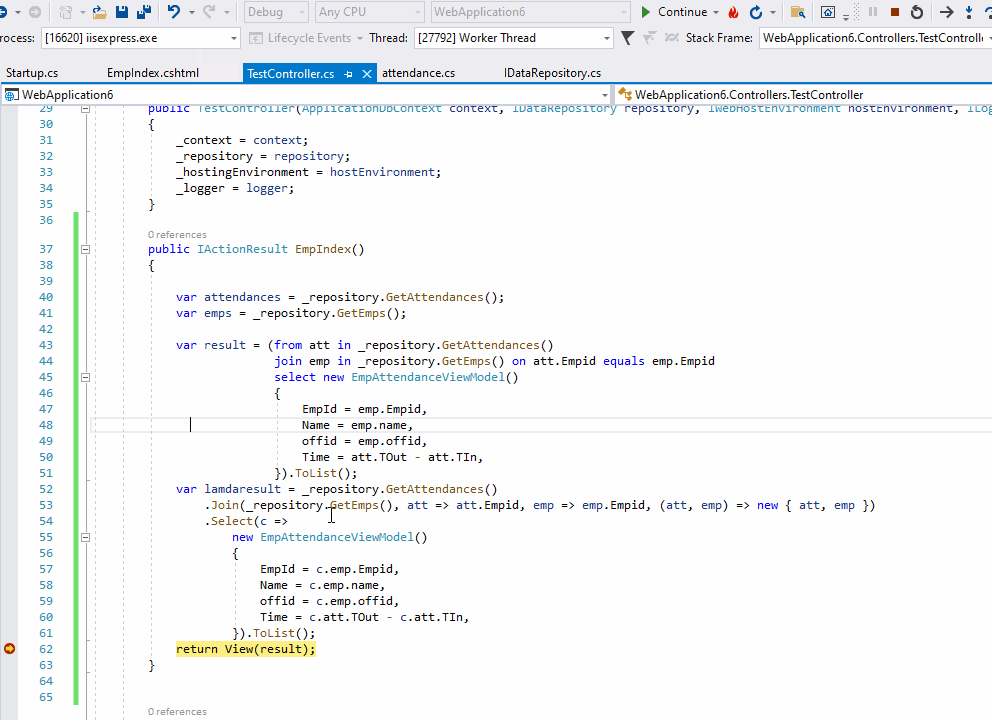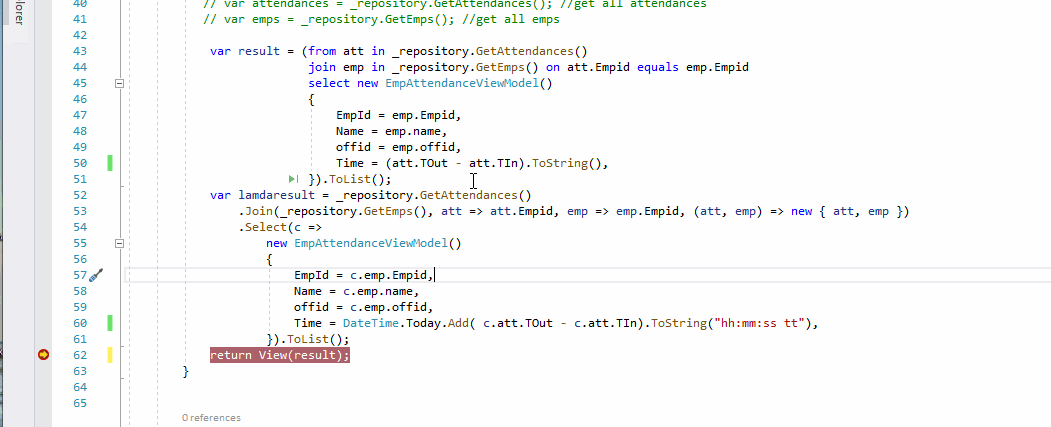Hi @anil kumar ,
now I want linq query to show difference of in and out time(which are saved in table as time format like 15:55:42) in hours ,min and second with join of both table
and bind it to view
Based on your model, I created a sample with the following test data:
public interface IDataRepository
{
List<attendance> GetAttendances();
List<emp> GetEmps();
}
public class DataRepository : IDataRepository
{
public List<attendance> GetAttendances()
{
return new List<attendance>()
{
new attendance(){ Empid=1001, TIn = new TimeSpan(1,2,22), TOut=new TimeSpan(5,32,33)},
new attendance(){ Empid=1002, TIn = new TimeSpan(8,52,30), TOut=new TimeSpan(18,5,33)},
new attendance(){ Empid=1003, TIn = new TimeSpan(9,2,12), TOut=new TimeSpan(18,10,21)},
};
}
public List<emp> GetEmps()
{
return new List<emp>()
{
new emp(){ Empid=1001, name="Tom", offid=101},
new emp(){ Empid=1002, name="John", offid=102},
new emp(){ Empid=1003, name="Vivian", offid=103},
};
}
}
Then, we could use the following LINQ statement to join table and calculate the time span:
public class TestController : Controller
{
private readonly ApplicationDbContext _context;
private readonly IDataRepository _repository;
public TestController(ApplicationDbContext context, IDataRepository repository)
{
_context = context;
_repository = repository;
}
public IActionResult EmpIndex()
{
// var attendances = _repository.GetAttendances(); //get all attendances
// var emps = _repository.GetEmps(); //get all emps
var result = (from att in _repository.GetAttendances()
join emp in _repository.GetEmps() on att.Empid equals emp.Empid
select new EmpAttendanceViewModel()
{
EmpId = emp.Empid,
Name = emp.name,
offid = emp.offid,
Time = att.TOut - att.TIn,
}).ToList();
//using linq lambda expressions
var lamdaresult = _repository.GetAttendances()
.Join(_repository.GetEmps(), att => att.Empid, emp => emp.Empid, (att, emp) => new { att, emp })
.Select(c =>
new EmpAttendanceViewModel()
{
EmpId = c.emp.Empid,
Name = c.emp.name,
offid = c.emp.offid,
Time = c.att.TOut - c.att.TIn,
}).ToList();
return View(result);
}
The result as below:

You can also change the TimeSpan to the DateTime format. Refer the TimeSpan Struct.
If the answer is helpful, please click "Accept Answer" and upvote it.
Note: Please follow the steps in our documentation to enable e-mail notifications if you want to receive the related email notification for this thread.
Best regards,
Dillion

